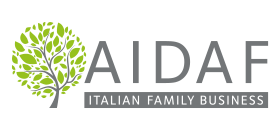

The Rothoblaas warehouse, one of Automha’s most important projects in the most recent years, has attracted attention to itself for the ability to meld both efficiency and sustainability. In fact, the automated system is a self-supporting shelving made of wood.
In the article by Il Giornale della Logistica, Alexander Vaja, Logistics Manager of the Rothoblaas Warehouse, explains the reasons for which the company in Cortaccia (Bolzano) trusted Automha with the task to improve its picking performance.
Read the full article below: Automha for Rothoblaas: Elegance meets warehouse “The rapid and important growth seen in most recent years (over 30% in 2021), has placed us ahead of the need to intervene and empower assets in logistics. The storage capacity of 11,500 pallets, offered by the previous warehouse, wasn’t sufficient anymore to support our long-term development goals and so, in 2019, we decided to change paths and invest in the construction of a new warehouse. The opportunity to take advantage of the 4.0 incentives and the need to use to the millimeter all the height granted by the local land management for new developments (21 meters) inspired us to make, for the first time, the jump to logistic automation.”
With a good dose of pragmaticism, Alexander Vaja, Logistics and Warehouse Manager of Rothoblaas in Cortaccia, Bolzano, began to speak with us of the new central warehouse, which just begun operating last December in 2021, doing so almost without sign of all that makes it a protagonist, just before its birth, of the local and national news, not only of the sector of the first and only in Italy, of self-sufficient shelving made completely of wood. But of this, we will speak more of later.
Automha: Choosing the right partner “As soon as we made the decision to implement an automated warehouse – explains Vaja – we looked in the market for the right partner that could accompany us on this journey and the choice fell on Automha.” The reasons are diverse and regard, on one hand, the similarity given by the business sizes – “We are both medium-sized companies and the dialogue immediately carried on at the same level” – and from the geographical proximity – “the fact of having a liaison that could rapidly and directly intervene when necessary was very important” – and on the other hand, the calmness given by the economic factor – “the proposal was decisively competitive” – and from the commercial approach – “the technicians and sales at Automha followed us through every step of the offer and the project.”
Even if, at the back, to make the difference was the Azzano San Paolo company’s capacity to hit the technological goal. “Despite at the beginning it was a bit skeptical the idea to apply its technology to shelving made completely of wood, Automha proposed to us a system that we immediately understood as extremely innovative and adaptive to satisfy the objective we had placed before them. Their system with the Supercap automatic shuttles struck us.”
The project’s objectives Beyond what has already been said, Rothoblaas, in particulare, needed to improve their picking performance. “From the analyses and the mapping breakthroughs – explains Vaja – emerged that on a totale of 6,500 managed assets, 18% generate around 80% of the handling, a textbook Pareto curve. The new warehouse, then, would have to not only increase storage capacity, but also facilitate a dynamic picking system to optimize the handling of assets at the lowest rotation and improve the management of the ABC classification of spaces. In the main warehouse in Cortaccia, finished products are stored, created according to the requirements provided by Rothoblaas, international suppliers, that will then be distributed through the global network. From Italy, both the resupplying of stock for international subsidiary warehouses and client order requests leave. “There are two different logics: from here originates the necessity to organize the warehouse.”
The storage zone was therefore subdivided in two areas with different depths of storage: in multi-depth up to 6 pallets per slot, handled by a shuttle and two stacker cranes and double depth, where fast access to pallets is guaranteed by two stacker cranes with telescopic forks. The warehouse: layout and operations The warehouse, large 3,200 square meters, was planned to hold around 18,800 pallet locations, guaranteeing a capacity of 80 inbound pallets/hour and 120 outbound pallets/hour (200 combined/hour), subdivided between 5 zones interfacing with operators.
The plant also houses 6 bidirectional picking stations and two stations each equipped with 8 gravity buffer channels for the pre-preparation of shipments. The flow of pallets between the warehouse area and the inbound/outbound bays is regulated and fed by the closed circuit Rushmover on which travels in loop a total of 8 shuttles. Finally, the handling areas were studied to allow the handling of loads with electric pallet trucks in the loading and unloading operations at the floor level.
In Cortaccia, 4 different types of loads are managed (800 x 1100 x h750/800 mm, 1500 x 1200 x h1200 mm, 800 x 1200 x h1850 mm, 800 x 1140 x h800 mm) with a maximum load unit weight of 1,000 kg – a complexity that has made defining sensors along the plant particularly delicate and meticulous – while, in outbound, the shipping units are mostly pallets, principally direct to refilling of the adjacent manual warehouse and the subsidiaries, followed by packages 80 x 60, and other sizes up to 25 kg.
In & out flows The inbound flow starts with the arrival of pallets from suppliers, that from two entrances (one of which is hybrid, usable also as an exit) that become inserted into the handling system: once having passed the shape, weight, bending and forking light checkpoints, the pallets are taken to load by one of the 8 Rushmover shuttles and transported to the entrance bays of the storage area indicated by the WMA system (AWM from Automha), where the pass at the crane and in the end to the opportune storage location. In outbound, the collected pallets from the warehouse can be immediately under way to the shipping zone or addressed to the adjacent warehouse or the traditional one, or brought to the dynamic picking stations, where orders in outbound will be processed and where, eventually, the parent pallets will return to the warehouse.
AUTOMHA S.p.A. – Headquarters
Via Emilia, 23 · 24052
Azzano San Paolo
Bergamo ITALIA
Tel: +39.035.45.26.001 – Fax: +39.035.45.26.050
E-mail: automha@automha.it
AUTOMHA IBÉRICA S.L.
Avenida Alps, 4808940
Cornellà de Llobregat
SPAGNA
PH +34 935216359
E-mail: iberica@automha.com
AUTOMHA INDUSTRIES CO.LTD
15 Sanhe Road – Lu Du Town
215412 Taicang City – Suzhou – Jiangsu Province
P.R. CINA
PH +86 512.5320.7802
E-mail: china@automha.com
AUTOMHA INDIA
702 Damji Shamji Business Galleria
L.B.S. Marg. – Next to Toyo House – Kanjur Marg
WestMumbai – INDIA
PH +91022.257.81.231.32
E-mail: americas@automha.com
AUTOMHA AMERICAS AUTOMATION CORP.
1300 South Service Rd.
Oakville – Ontario
L6L5T7 CANADA
PH +1 855.725.578.6
E-mail: americas@automha.com
Sito: https://automhaamericas.com/
AUTOMHA AMERICAS AUTOMATION LLC.
402 Vulcan St
Ste 100
Buffalo, NY 14207
E-mail: americas@automha.com
Sito: https://automhaamericas.com/










